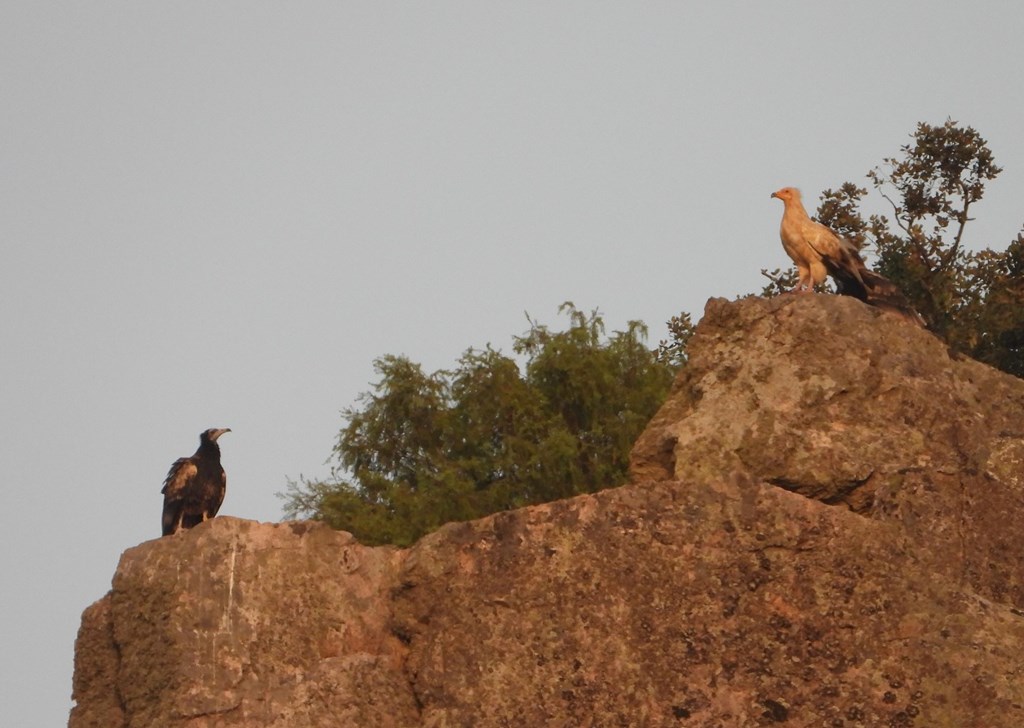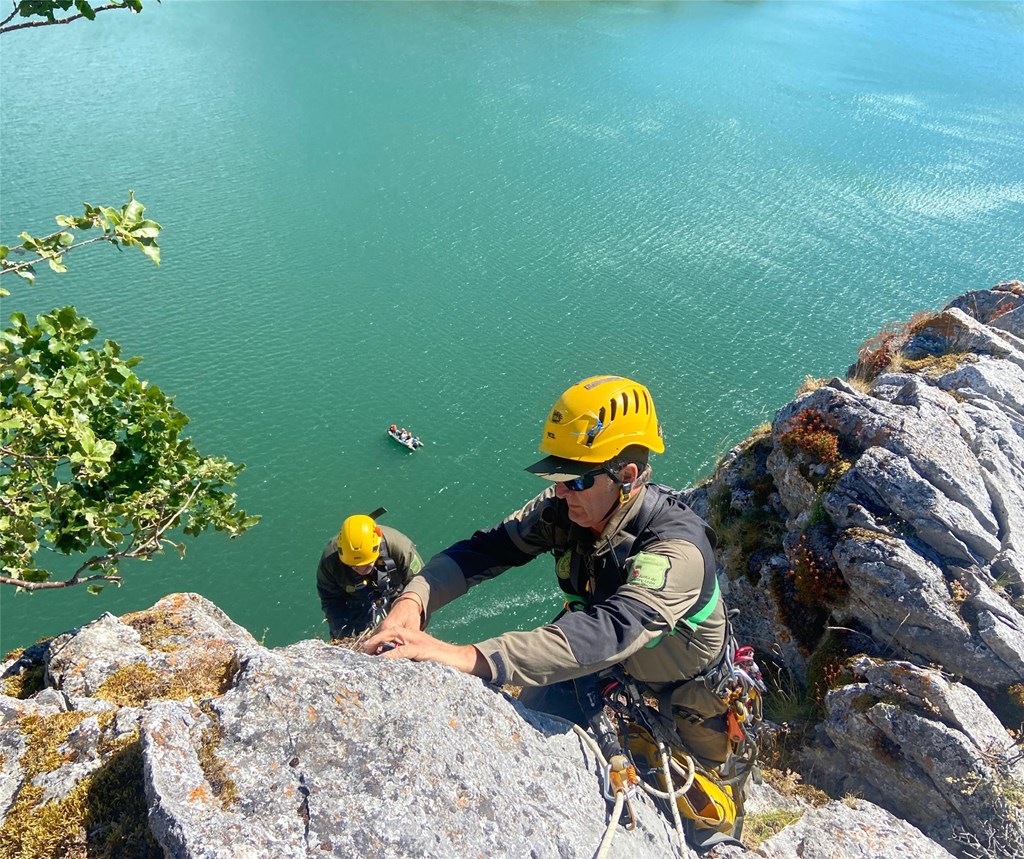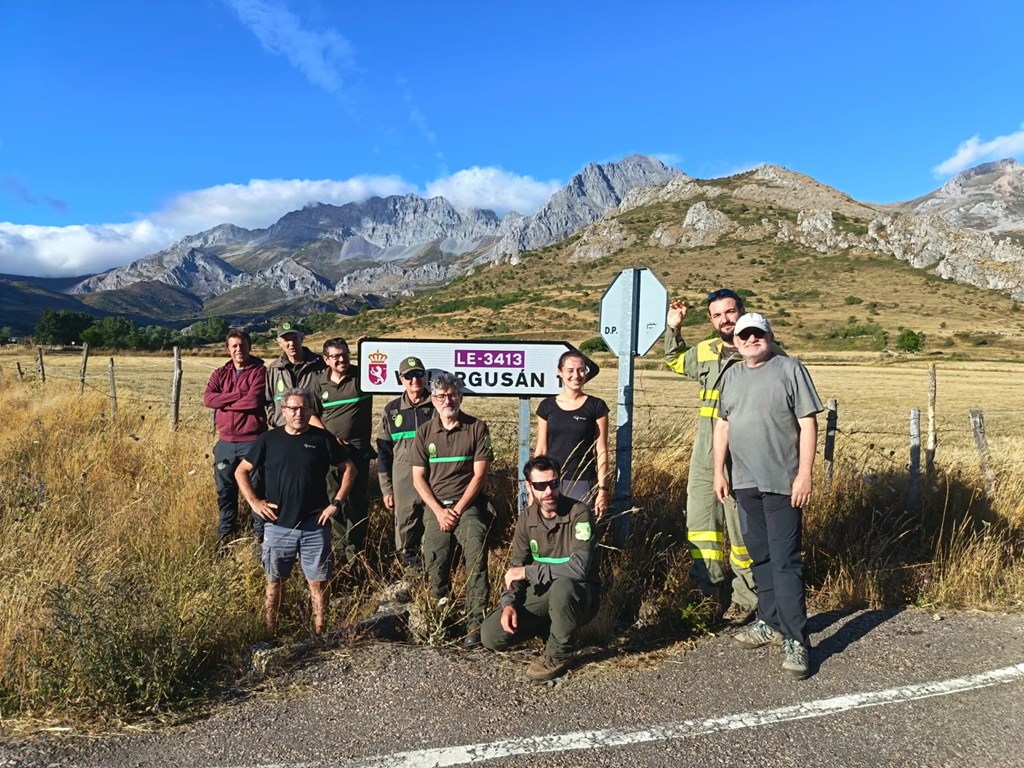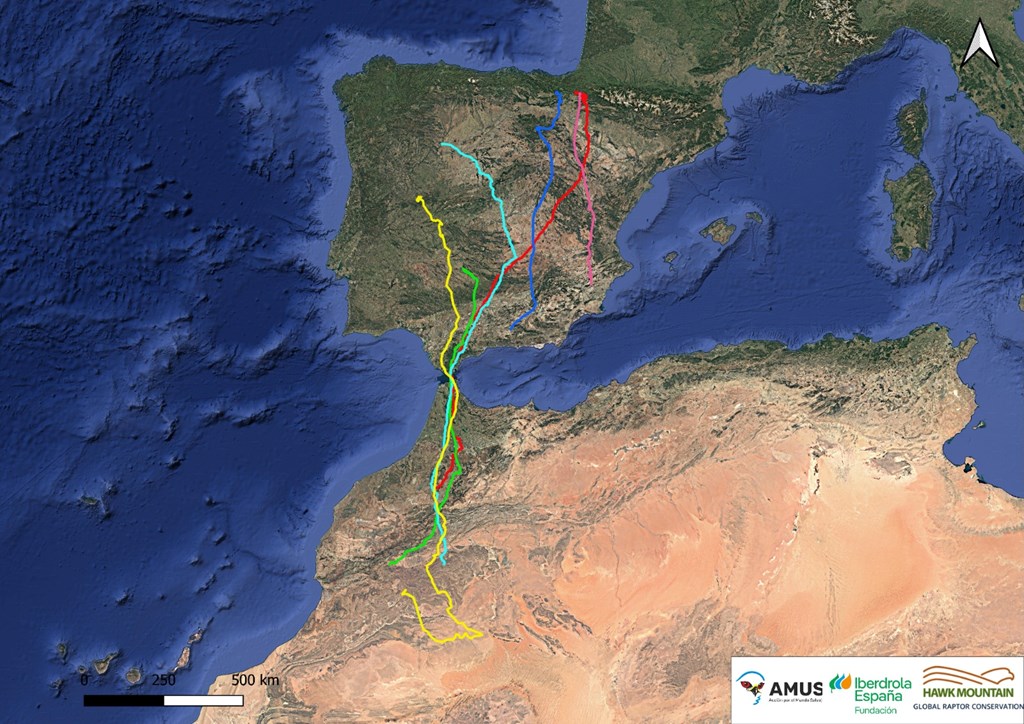Wings Over the Mediterranean: International Collaboration to Save Egyptian Vultures Takes Flight
Posted on in In the Field by Alfonso Godino

The Egyptian vulture (Neophron percnopterus) is one of four breeding vultures present in Europe. Of these four, it is the smallest and recognized by its characteristic black-and-white plumage in adults and distinctive wedge-shaped tail. The IUCN Red List classifies the Egyptian vulture as Globally Endangered and the breeding population in Spain is around 1,500 breeding pairs, which is almost half the population across all of Europe. Declines within the Spanish population are credited to poisonings, collisions with energy infrastructure, and disturbances to breeding areas by sport and recreational activities. In other areas of the Mediterranean, shooting threatens several migratory corridors, including Mesina between Italy and Tunisia, and in Cyprus and Lebanon. Across wintering areas in Africa, Egyptian vultures suffer from poisoning and persecution for traditional medicine.
Due the important role of the Spanish population of Egyptian vultures, the Spanish NGO Acción por el Mundo Salvaje (AMUS), in collaboration with Hawk Mountain Sanctuary and Fundación Iberdrola España, have launched a national project to better understand aspects of its biology (such as space use and migration) and to detect and identify threats using GPS technology. The project, which commenced earlier this year, is being coordinated by Alfonso Godino, a former conservation science trainee and current research collaborator of Hawk Mountain Sanctuary. He shares what effort has looked like so far:

We started at the beginning of the year, even while the Egyptian vultures were still in the wintering areas in Africa. We contacted five regional wildlife authorities to get the authorization to tag the 10 nestlings and 5 adults planned in the project from different areas to try to get a more representative sample. After obtaining the GPS transmitters, we got to work.
During March, the Egyptian vultures arrive to the breeding areas in Spain, so this was the time to contact the wildlife technicians and rangers to select the nests and adults to tag. Thanks to these amazing teams, we selected 10 successful nests that were reasonably accessible (the Egyptian vulture is a cliff nesting species and sometimes the nest is several dozens of meters from the ground), and also prepared the tagging of 2 adults.

Our first success was thanks to our colleagues from Aragon region, in NE Spain. They trapped and tagged the first adult Egyptian vulture of our project in June. This was an exciting achievement for the project, since the Egyptian vultures are very clever and difficult to trap.
In July, we planned the tagging of nestlings. Access to the nest for GPS tagging had to be carefully planned, as we needed to have a very good estimation of the age of the nestlings. Age/size of the young birds had to be carefully considered, as we cannot attach the GPS harness on very young nestlings due to continued growth, nor older nestlings due to the risk of jumping from the nest prematurely. Accurate monitoring is really essential for safe tagging. Another challenge is nest accessibility, because nests are often in the middle of a cliff of 60-80 meters!

In addition to the GPS tagging, all birds tagged were sampled to study toxin exposure. Environmental toxins present a quiet threat, not plainly evident, but able to kill many raptors species, the Egyptian vulture included. We tested for 15 toxins of three different groups: heavy metals, veterinary anti-inflammatory drugs, and antibiotics.

It was an amazing month traveling across Spain, visiting lovely landscapes where the Egyptian vulture nests are and meeting very enthusiastic wildlife rangers. These rangers were responsible for the monitoring and conservation of this endangered species in the Spanish regions of Aragón, Castilla y León, Extremadura, and Navarra. This project could never be possible without their help.
In just one season, we managed to GPS tag 10 nestlings—the number we planned to tag in two seasons! Another nice surprise came on the last day of July, when colleagues from the Navarra region in northern Spain tagged the second Egyptian vulture adult of the project! The bird was ringed as a nestling in France in 2019, making it approximately 6 years old. Probably not a fully matured adult but could perhaps breed the next year!


And now, writing these words in mid-August, we have received the signal from the GPS of the first flight of several of the nestlings tagged in July. They have in front of them a huge challenge: human threats, the migration to Africa, the wintering period and the back to Europe for breeding.
We are really excited to be able to track the life of these Egyptian vultures along the next 3-4 years and continue the GPS tagging of 3 adults and 2 nestlings during 2026.
Hawk Mountain Sanctuary is thrilled to once again collaborate with Alfonso Godino in the study and conservation of vultures on the Iberian Peninsula, one of the most important areas for vultures in the world. In recent years, Alfonso has been leading the charge in the study of the cinereous vulture in Portugal, and with this new project, he will also be a key partner in a project focusing on a migratory and globally threatened vulture species, the Egyptian vulture.